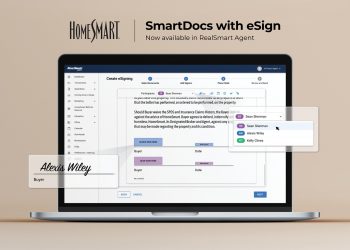The Federal Housing Finance Agency (FHFA) recently stated it is expanding eligibility for Fannie and Freddie’s Refinance programs for low- and moderate-income borrowers, as well as restoring the desktop appraisal flexibility.
“Expanding eligibility for low- and moderate-income families to refinance their mortgage and lower their monthly payments, together with leveraging desktop appraisals to reduce inefficiencies in the mortgage process, are meaningful steps toward overcoming barriers to affordable and sustainable homeownership,” said FHFA Acting Director Sandra L. Thompson in a statement. “Today’s actions demonstrate that FHFA will continue to act purposefully and in dialogue with its stakeholders to minimize market disruption and ensure its regulated entities operate in a safe and sound manner.”
In the next few months, Fannie Mae and Freddie Mac will expand eligibility requirements for their RefiNow and Refi Possible programs.
At launch, the programs stated that area median income (AMI) requirements were limited to borrowers with current income at or below 80%. The income threshold was increased, allowing some moderate-income borrowers, with incomes at or below 100% of AMI, to qualify.
“I am pleased to announce today that Fannie Mae and Freddie Mac will be expanding their new low-AMI refinance programs, RefiNow and RefiPossible, with several enhancements to grow the eligible population and to make these programs easier for lenders to offer,” said Thompson during the 2021 Mortgage Bankers Association Annual Convention & Expo.
“We first announced these programs in the spring, as a way of helping low- and moderate-income borrowers access the same refi opportunities that higher income borrowers were using,” added Thompson. “Take up of these programs has been slower among some of the larger depository lenders, and these new changes incorporate feedback we have received about how to make the programs more effective and how to reduce frictions in the process.”
In addition, both enterprises will incorporate desktop appraisals into their Selling Guides for many new purchase loans starting in early 2022. During COVID, the use of desktop appraisals by the enterprises was one of several temporary flexibilities initiated. A thorough review of data collected from use of the loan flexibilities, and input from the Request for Input (RFI) and public listening session on appraisal-related policies, practices and processes, led to the continued use of desktop appraisals.
“The housing market is always changing, and we need to ensure that our structures and systems grow and evolve with it by fully using all the appropriate tools and available information,” said Thompson. “With desktop appraisals, an appraiser brings their valuation expertise to information that has already been made available to them, such as through listings. This can help each appraiser complete more loans in a day, and it can also help rural communities more readily obtain a necessary appraisal when the borrower is purchasing a property.”
“With desktop appraisals included in the selling guides, what was one of the temporary flexibilities with an uncertain future has been adjusted to mitigate risk for use over the long-term and will now become an established option for originating Enterprise loans. An option that lenders can count on,” Thompson added.
 Liz Dominguez is RISMedia’s senior online editor at RISMedia.com. Email her your real estate news ideas to lizd@rismedia.com.
Liz Dominguez is RISMedia’s senior online editor at RISMedia.com. Email her your real estate news ideas to lizd@rismedia.com.











